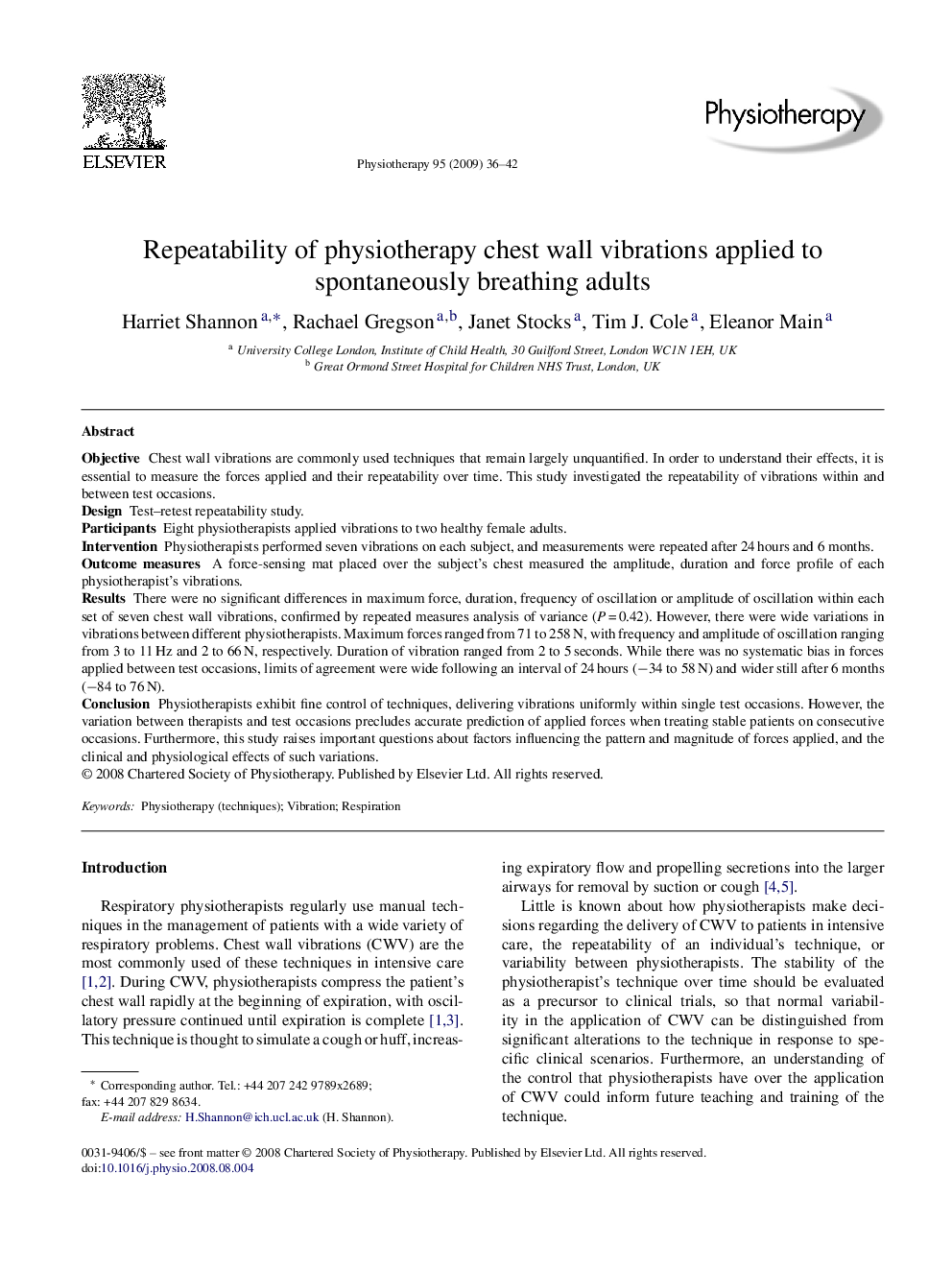| کد مقاله | کد نشریه | سال انتشار | مقاله انگلیسی | نسخه تمام متن |
|---|---|---|---|---|
| 2627923 | 1136125 | 2009 | 7 صفحه PDF | دانلود رایگان |

ObjectiveChest wall vibrations are commonly used techniques that remain largely unquantified. In order to understand their effects, it is essential to measure the forces applied and their repeatability over time. This study investigated the repeatability of vibrations within and between test occasions.DesignTest–retest repeatability study.ParticipantsEight physiotherapists applied vibrations to two healthy female adults.InterventionPhysiotherapists performed seven vibrations on each subject, and measurements were repeated after 24 hours and 6 months.Outcome measuresA force-sensing mat placed over the subject’s chest measured the amplitude, duration and force profile of each physiotherapist’s vibrations.ResultsThere were no significant differences in maximum force, duration, frequency of oscillation or amplitude of oscillation within each set of seven chest wall vibrations, confirmed by repeated measures analysis of variance (P = 0.42). However, there were wide variations in vibrations between different physiotherapists. Maximum forces ranged from 71 to 258 N, with frequency and amplitude of oscillation ranging from 3 to 11 Hz and 2 to 66 N, respectively. Duration of vibration ranged from 2 to 5 seconds. While there was no systematic bias in forces applied between test occasions, limits of agreement were wide following an interval of 24 hours (−34 to 58 N) and wider still after 6 months (−84 to 76 N).ConclusionPhysiotherapists exhibit fine control of techniques, delivering vibrations uniformly within single test occasions. However, the variation between therapists and test occasions precludes accurate prediction of applied forces when treating stable patients on consecutive occasions. Furthermore, this study raises important questions about factors influencing the pattern and magnitude of forces applied, and the clinical and physiological effects of such variations.
Journal: Physiotherapy - Volume 95, Issue 1, March 2009, Pages 36–42